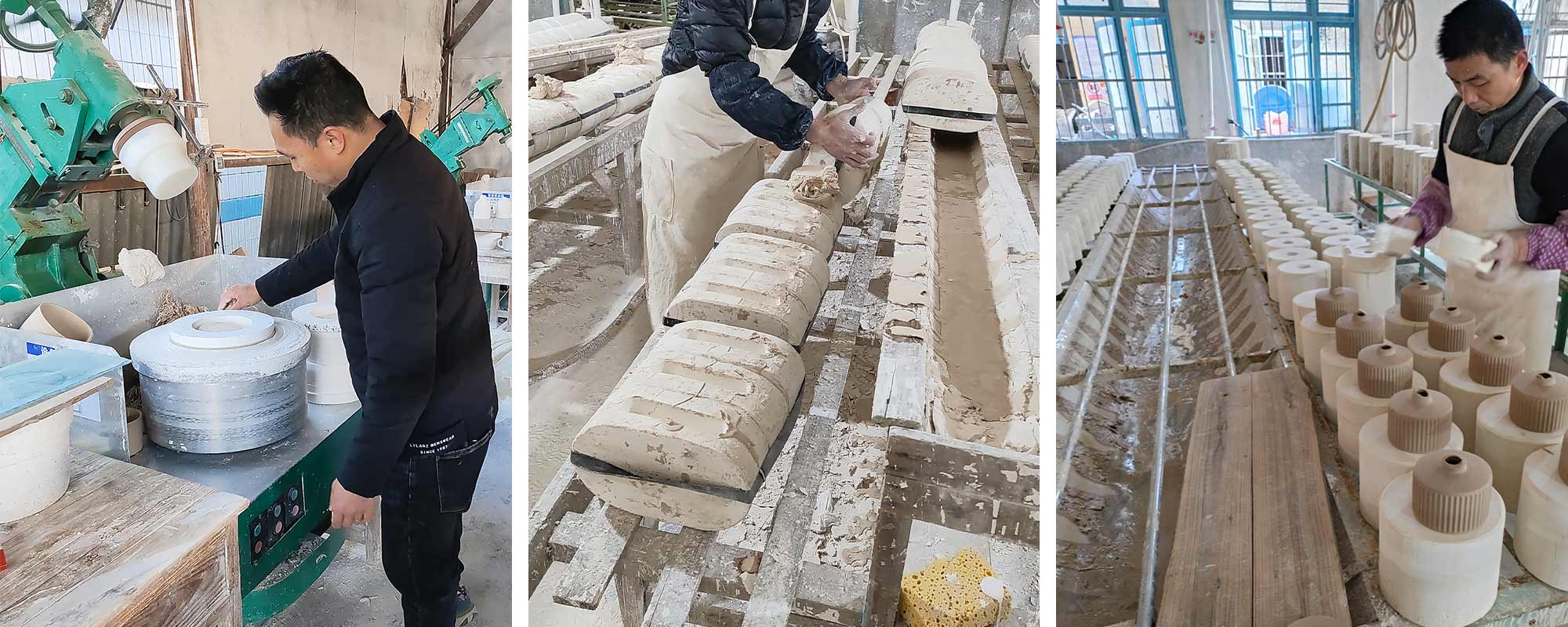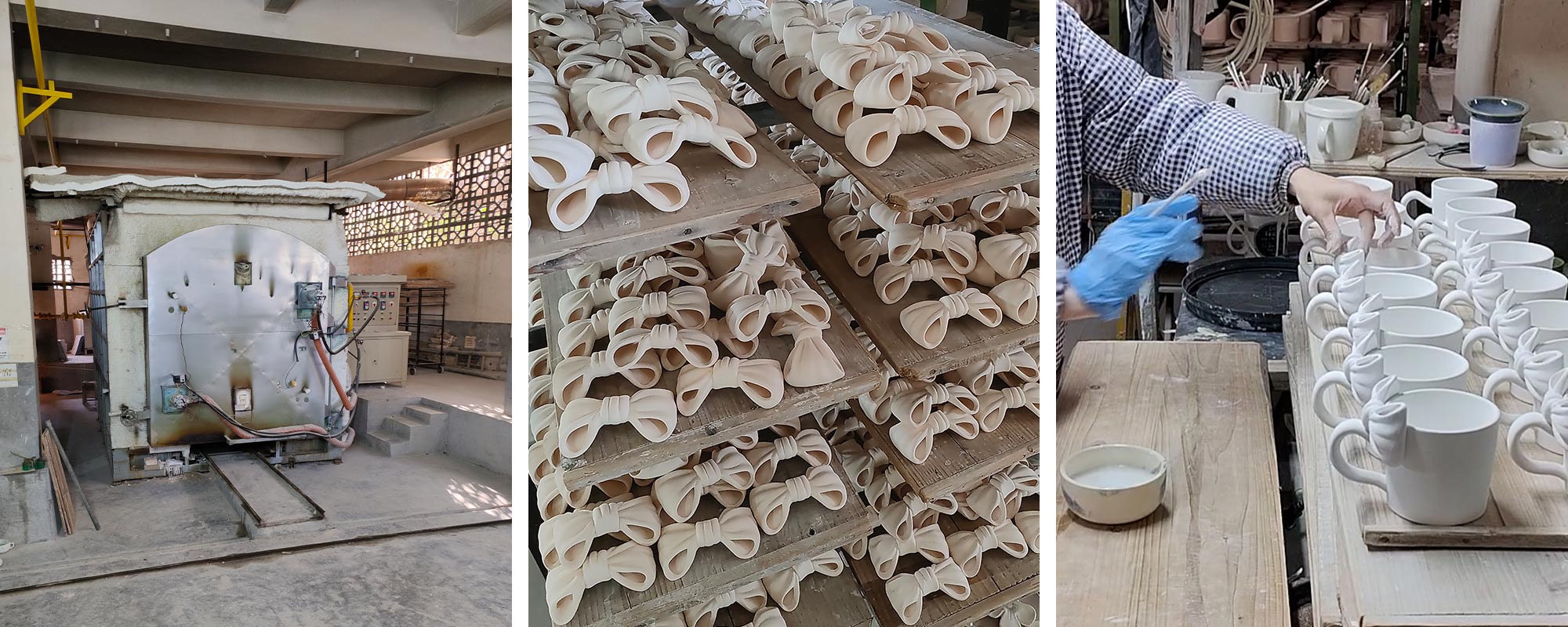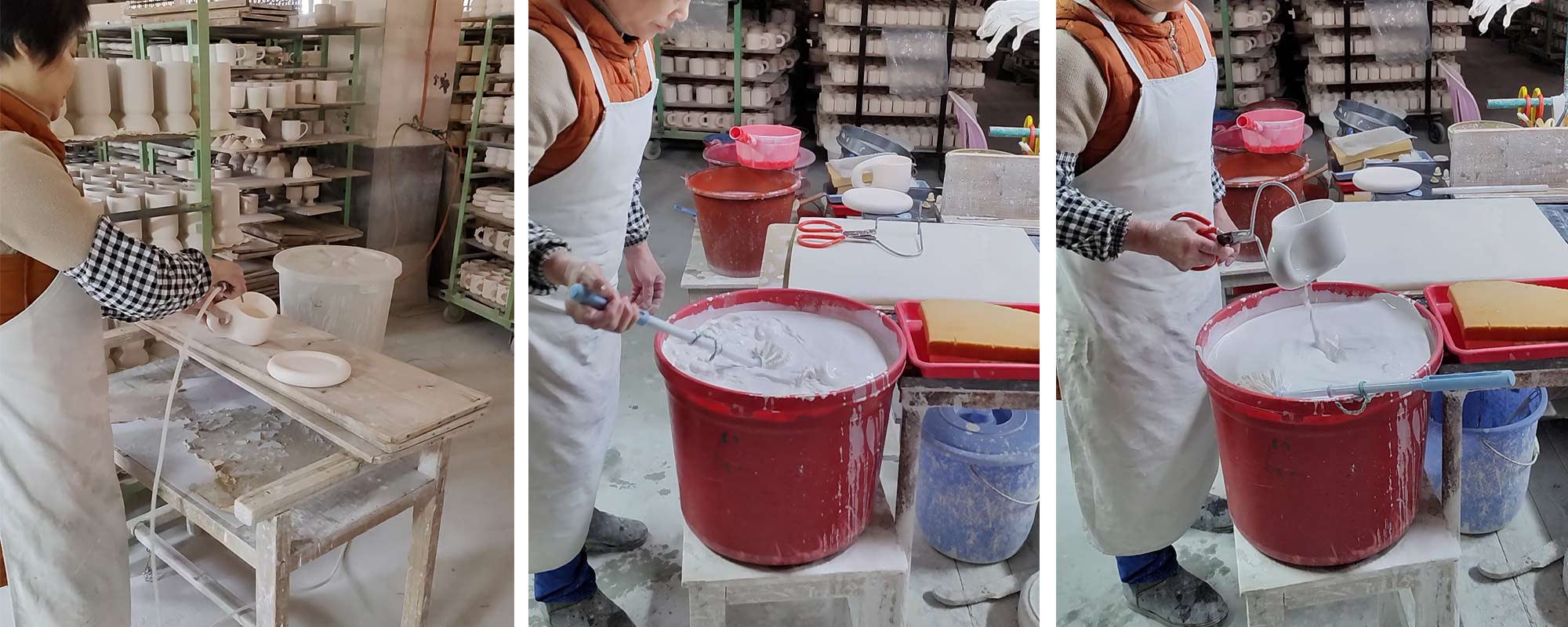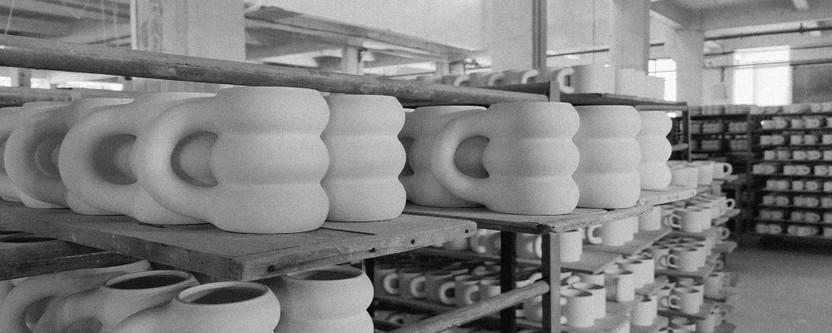A story from our atelier
Posted by TUTU HOME on 15th Jun 2023
Nestled in the bustling city of Dehua, we take you on a journey to one of our ceramic ateliers.
Dehua porcelain is special. So special in fact, the kilns of Dehua are included on the UNESCO World Heritage List.
Before we step into the atelier, we need to know some differences. If you haven’t already read our article about Jingdezhen porcelain, have a read here.
To sum it up, they are quite different.
Jingdezhen porcelain is made from kaolin clay that has a fine texture and translucency, fired at a higher temperature, and coated with a clear glaze to enhance its translucency.
While Dehua porcelain is made from ‘Dehua Stone’ that has a soft, delicate texture, and is pure white, fired at a lower temperature, and typically unglazed or coated in a thin glaze.
Stepping into the atelier, you immediately taste the smell of porcelain. Metallic with a warm note of aged wood and musk. Towers of unfinished works, machines and tables filled with tools that surround you. Melodically chaotic. Order doesn’t feel like it exists, but it does, as the ateliers begin chipping away at one of our new collections.
We meet with Lee. Young man, early 40s, is the owner and has been running the show since 1998. It is a family run business with a legacy that has been producing high-quality ceramics for renowned brands in Italy, the UK and Japan. We’ve been working with him the last few years and have built up a great relationship.
It begins with the raw materials. Locally sourced in the mountains for centuries, Dehua Stone or Blanc de Chine is a soft, pure white rock. This is grounded down by wooden machines into a fine, soft powder.

Grinding down the raw materials into a fine powder.
Ball milling is the next step to turn the powder into a workable clay. This process continues the grinding of the raw materials but in a large cylindrical drum with a rotating chamber. This further reduces the size of the particle matter and blends them together into a paste like texture.
This paste feeds out the back of the machine into a log-like shape of clay. This is where the clay is prepared. By sieving, mixing, aging and adding water or other materials can change the consistency, and plasticity, as well as to remove impurities. This can take days, even weeks to perfect.
Once the clay is ready, we will hop into the one of the artisan desks to find out what the team is creating today.

(left) Ball milling machines (centre) preparing clay (right) one of the studio spaces.
There are a couple methods to form clay into a shape. First is jiggering – using a rotating wheel and a profile tool. We use this to make our plates, bowls or other round or flat shapes. Second is casting – pouring liquid clay into a mold, then left to dry and harden. Once the clay has set, the vase is removed from the mold, and the edges are cleaned and perfected. We use this to create more complex shapes.
These ceramics are then loaded on shelves with wheels and pulled into the kiln for their first firing. This is called Bisque firing which lasts for 20 hours at 800°C.

(left) Jiggering technique. (centre) Casting technique. (right) Castings have dried out, now inspecting and preparing vases for the kiln.
Our Papillon mugs have been popular recently. Yesterday, the mugs and their bow ties were fired separately. They have completed their bisque firing, and came out of the kiln this morning. Since then, they have been cooling down. Our artisans are now carefully gluing the bow ties onto the mugs by using liquid clay. This will then be fired again for another 10 hours.

(left) Kiln for firing. (centre) Bow ties fired in the kiln, now cooling down. (right) Applying the bow tie to complete the Papillon mug.
The final step to our ceramics is the glaze. Once the ceramics have come out of the kiln for the second firing, they will have to cool down, and then be cleaned if there are any imperfections on the surface. Here we can see our Drapeau mug getting a white glaze. It is mixed with a toilet brush – why not? The Drapeau mug is drowned in this glazed a few times, held and controlled by glazing tongs. This is then set to dry and then back in the kiln for the final firing.

(left) Cleaning the mug after kiln. (centre) Preparing the glaze. (right) Applying the glaze.
The final firing is called Glost firing which lasts 20 hours at 1300°C. This is where all the magic happens. To an untrained eye, the glazes appear different to the final glaze. For us - with less experience in the art - always get a nice surprise when they leave the kiln for the final time.
This is when we do our final inspections. We test so that each ceramic meets quality standards.
When we purchase things online, such as our collections, it is a simple transaction with a click of a button. Today, our world is faster than ever, and we have these expectations that things are immediate. I hope today, you have learnt that the process isn’t immediate, that there is tradition still being utilised and respected. It is a special craft our ateliers are performing in Dehua. We respect their craftsmanship, and we love it, and we want you to enjoy it as much as we do. So next time you purchase a mug or Blanc de Chine ceramic from us, remember the process, the love and care of many hours it has been through.
Thank you for supporting.
Shop our collection here.




